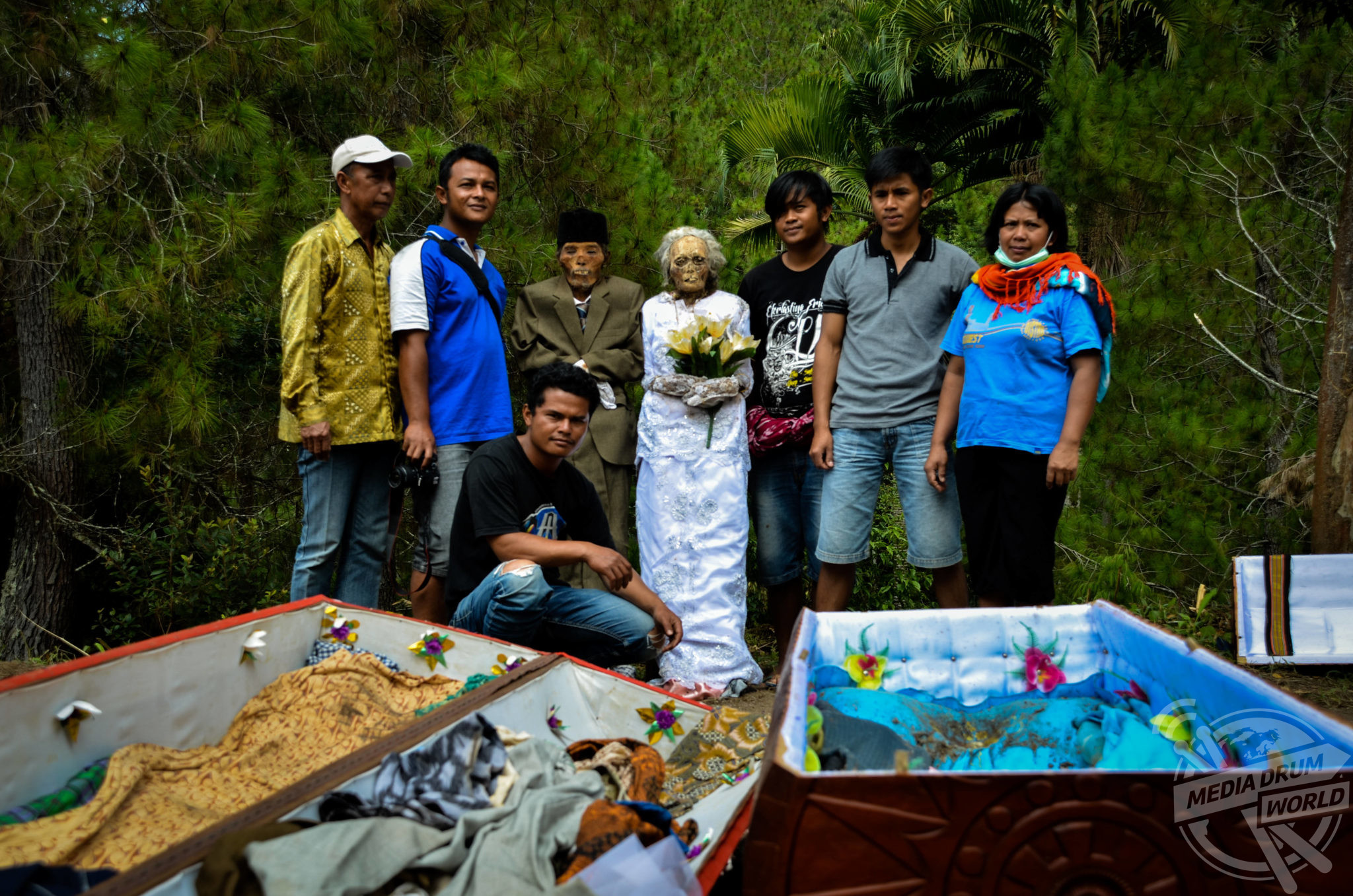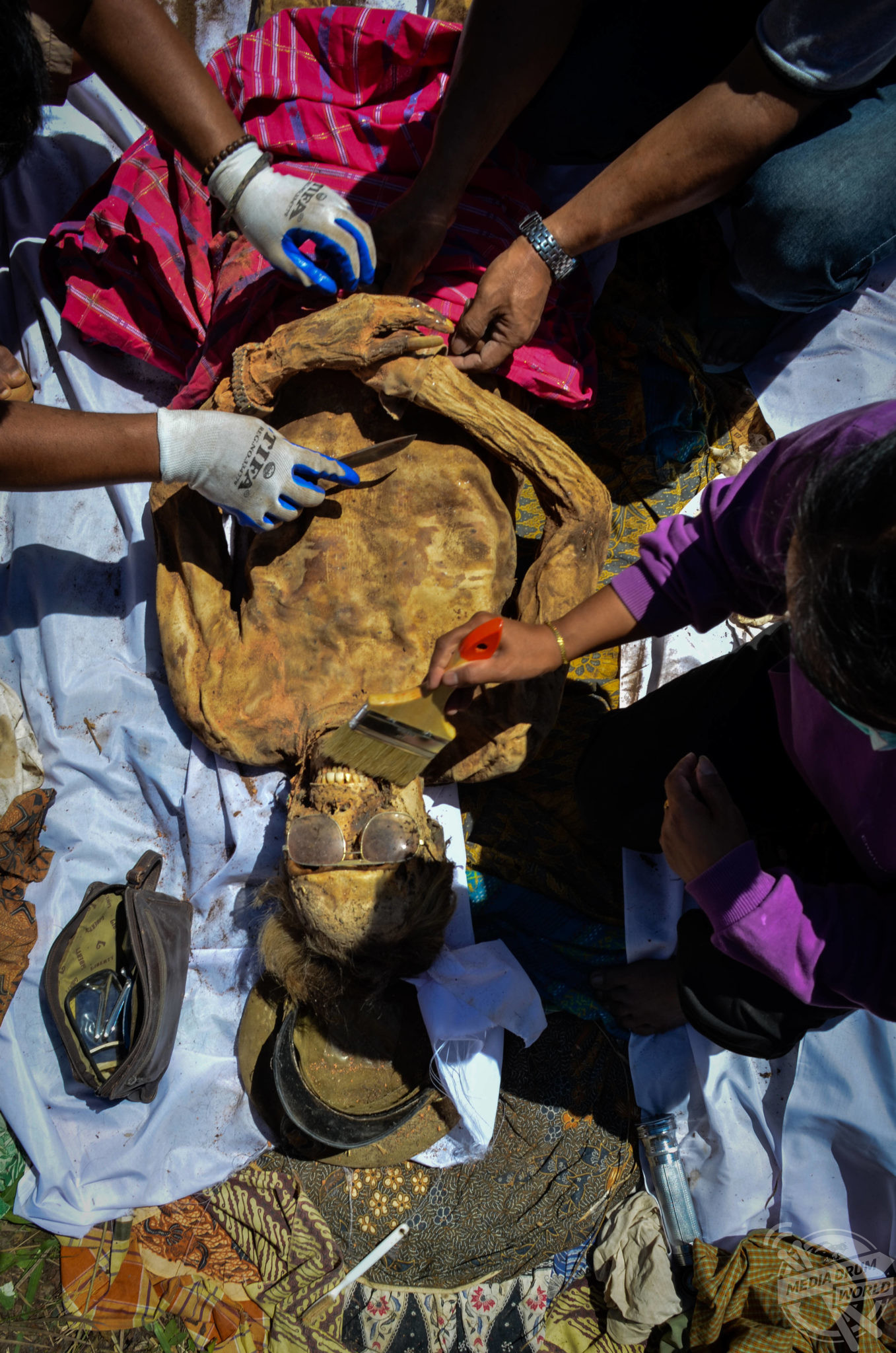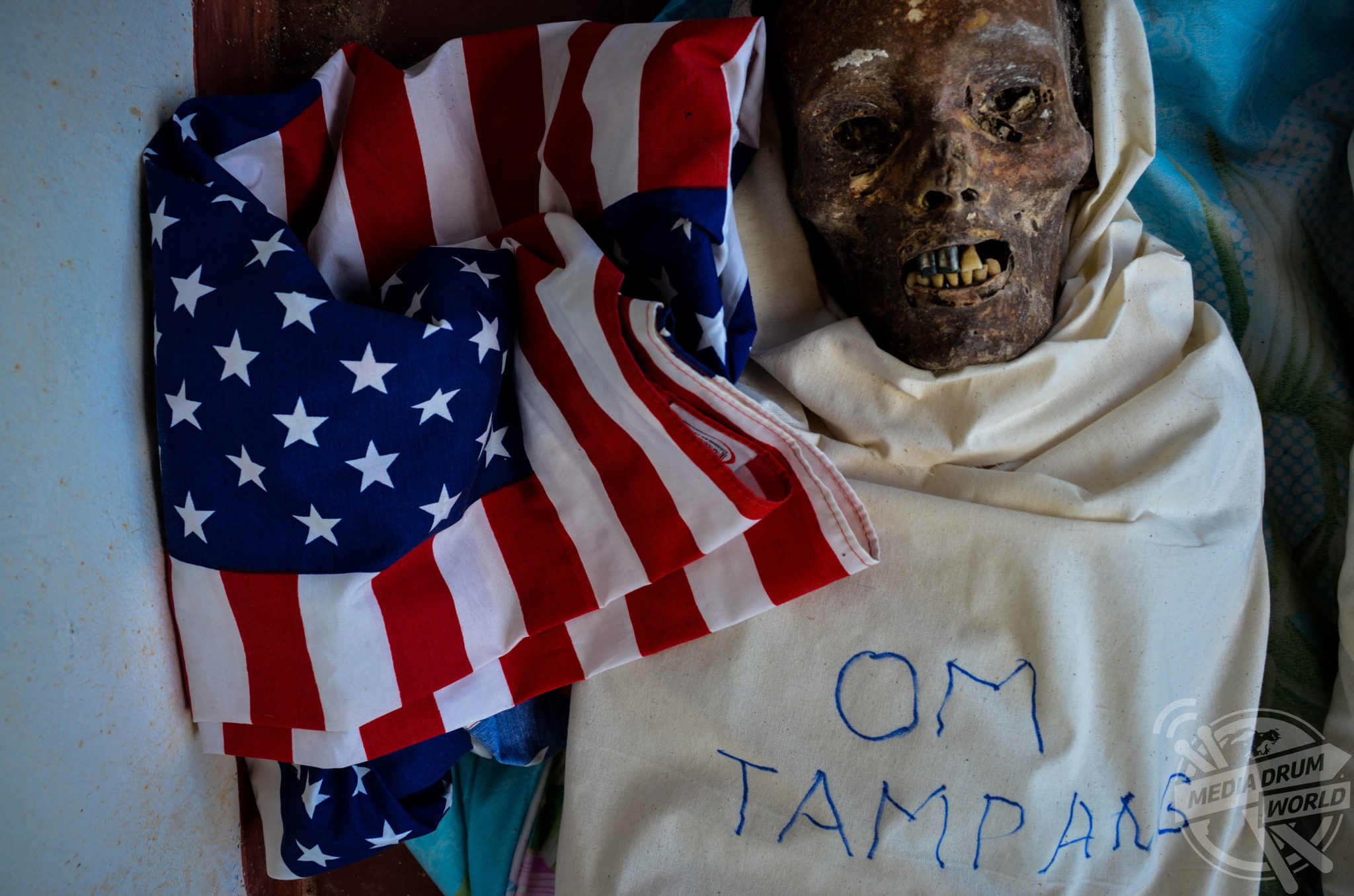
By Alex Jones
SHOCKING photographs show families exhuming their mummified loved ones years after their passing before combing the corpses’ hair, realigning their glasses and posing the bodies for a FAMILY PHOTO.
Remarkable shots of the Toraja Tribe, who live in South Sulawesi in Indonesia, show the village sprucing up their dead loved ones every three to four years in a bizarre spectacle filled with love and remembrance.
Striking images include a family painstakingly dusting a corpse with a paintbrush, corpses being tied to a wooden stake to allow them to ‘dry’ under the hot, tropical sun, and a family taking photos of a beloved but long-dead couple dressed in freshly-issued wedding clothes.

The captivating ceremony was documented by Indonesian travel photographer, Imran Rosadi (30) who spent several days witnessing the peculiar post-death ritual.
“The Toraja tribe also has a very unique and rare practice called the Ma’nene ritual,” said Rosadi, who uses the Instagram handle @imranrosadi_imee.
“It roughly translates as ‘The Cleaning of the Corpses Ceremony’; it is a ritual in which corpses that are tens or even hundreds of years old are removed from their Patane (tomb) to be cleaned, re-dressed, and fix their ornate, colourful caskets. This ritual is usually performed during the harvest season around July, August and September and is typically performed every three or four years, according to the family’s wishes.

“Before the procession opens the coffin and lifts the corpse, usually the traditional elders (Ne ‘Tomina Lumba) will recite prayers in the ancient Toraja language and ask for permission from the ancestors to extract them and also for a bountiful harvest.”
The curious act is central to the Taraja peoples relationship with death. Unlike in western cultures, where the body is swiftly removed after death and frequently held a few days later, the Indonesian village often keeps the bodies of their deceased oved ones in the family home for weeks, if not months. During this time, the corpse will be involved in general conversation and a meal brough to the body three or four times a day.

Once a funeral is held – after a suitable period of mourning and reflection – it is often a lavish affair costing exorbitant amounts of money and held over several days. This extravaganza is usually paired with the sacrifice of a buffalo or other animals.
For the tribe, death is only the next step in the soul’s journey through this world.
“The Ma’nene process is carried out by the family by cleaning the remains of the ancestors using a brush, redecorating the coffin, and drying the corpse in the sun to help preserve it for many more generations,” added Rosadi.

“The Ma’nene ritual is considered as a form of their love for ancestors and loved ones who have passed away. The villagers hope that ancestral spirits keep them safe from evil interference, pests which threaten to destroy local crops, and also general misfortunes. In addition to changing corpses’ clothing, this ritual is also followed by the ritual of slaughtering buffaloes and pigs as a form of offering.
“This tradition is believed to have been in the Toraja tribe for generations and has been going on for thousands of years. Today the practice can draw people from across the globe.”






